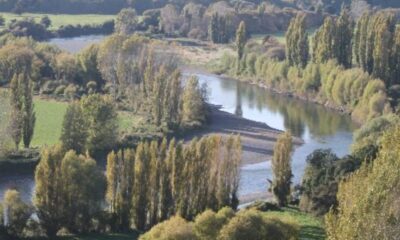Business
New Zealand Faces Rising Threat of ‘News Deserts’ Nationwide

A recent discussion paper highlights the alarming emergence of “news deserts” in New Zealand, indicating significant areas lacking in local coverage and public-interest journalism. The report, released by the Koi Tū think tank and authored by former New Zealand Herald editor-in-chief Gavin Ellis, warns that newsroom cutbacks are contributing to this troubling trend.
According to the research, the prevalence of news deserts means that certain geographic regions are becoming increasingly deprived of essential journalistic coverage. Notably, regions such as parts of the Far North have been identified as particularly vulnerable. The paper suggests that the issue is poised to worsen unless immediate action is taken.
Ellis emphasizes the seriousness of the situation, stating, “In the unlikely event that we do not already have news deserts, at the very least we stand ankle-deep in encroaching sand.” This metaphor underlines the urgent need for intervention to prevent more areas from becoming devoid of local news and information.
Call to Action for Government and Media
The Koi Tū paper serves as a clarion call to the New Zealand Government, media organizations, and communities to collaborate on solutions that can safeguard towns and regions from falling into these news deserts. The decline in local journalism not only impacts the dissemination of information but also affects civic engagement and community cohesion.
The report highlights a broader trend where major media institutions, such as The New York Times, employ more journalists than the entire workforce in New Zealand’s media landscape. This disparity raises concerns about the sustainability of local news coverage amid increasing competition and economic pressures.
The findings encourage a collective response to address the gaps in public-interest journalism. Without intervention, the risk of further geographic areas becoming isolated from critical news coverage is significant, posing threats to democracy and informed citizenship.
In conclusion, the emergence of news deserts in New Zealand presents a crucial challenge that necessitates immediate attention from all stakeholders involved in the media landscape. The Koi Tū think tank’s paper serves not only as a warning but also as a guide for potential strategies to revitalize local journalism and ensure that all communities have access to vital news and information.
-

 World3 months ago
World3 months agoTest Your Knowledge: Take the Herald’s Afternoon Quiz Today
-

 Sports3 months ago
Sports3 months agoPM Faces Backlash from Fans During Netball Trophy Ceremony
-

 Lifestyle3 months ago
Lifestyle3 months agoDunedin Designers Win Top Award at Hokonui Fashion Event
-

 Sports3 months ago
Sports3 months agoLiam Lawson Launches New Era for Racing Bulls with Strong Start
-

 Lifestyle3 months ago
Lifestyle3 months agoDisney Fan Reveals Dress Code Tips for Park Visitors
-

 World4 months ago
World4 months agoCoalition Forms to Preserve Māori Wards in Hawke’s Bay
-

 Health3 months ago
Health3 months agoWalking Faster Offers Major Health Benefits for Older Adults
-

 Politics3 months ago
Politics3 months agoScots Rally with Humor and Music to Protest Trump’s Visit
-

 Top Stories4 months ago
Top Stories4 months agoUK and India Finalize Trade Deal to Boost Economic Ties
-

 Entertainment3 months ago
Entertainment3 months agoExperience the Excitement of ‘Chief of War’ in Oʻahu
-

 World4 months ago
World4 months agoHuntly Begins Water Pipe Flushing to Resolve Brown Water Issue
-

 Science4 months ago
Science4 months agoNew Interactive Map Reveals Wairarapa Valley’s Geological Secrets









